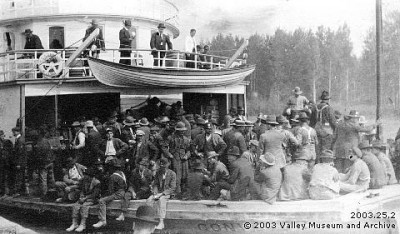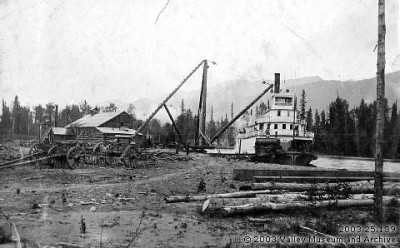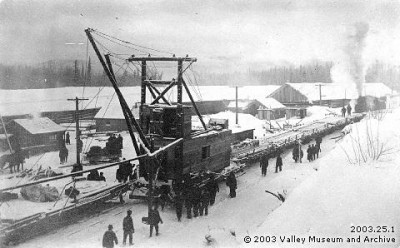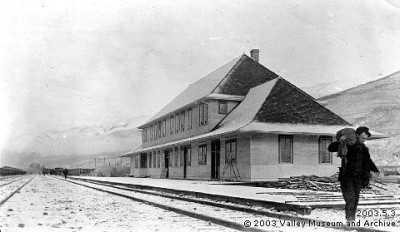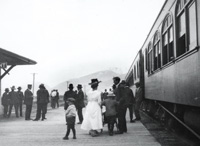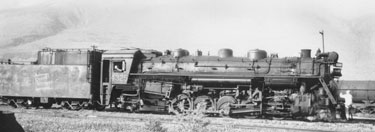Valley Museum and Archives Exhibitions at 521 Main Street, McBride.
July–August 2019 hours: 7 days a week, 10 am to 8 pm. September hours: Tuesday to Saturday 10 am to 5 pm. Admission free or by donation.
Now at 521 Main Street! See our library and museum summer program calendar for July and August.
Dunster Railway Station: More than 60 photos featuring the history of Dunster and the building of the railway from 1913, and many artifacts in the beautifully refurbished Grand Trunk Pacific Railway station. Open Noon to 4 pm Saturdays, Sundays, Wednesdays and Fridays, to coincide with arrival of VIA Rail passenger trains.
For more information about the museum visit valleymuseumarchives.ca. Some on-line collections can be seen at www.settlerseffects.ca and www.valleymuseum.ca.
Robson Valley History by Marilyn Wheeler
For centuries the Yellowhead Pass was an aboriginal trading route. The nineteenth century brought explorers, goldseekers and surveyors, and in 1872 Sir Sanford Fleming and his engineers began surveying to find railway routes through the pass. The Grand Trunk Pacific Railway Company surveyed a railway route from the prairies west to the coast, and railway construction took place from 1911 to 1914 when the first passenger train went through to the new port of Prince Rupert.
The site of McBride was surveyed and established as a divisional point on the railway in 1912, and its first station was claimed, for a while, to be the largest between Winnipeg and Prince Rupert. The yards had eight miles of track in addition to a roundhouse, turntable, bunkhouse, two water towers, a dam and an ice house. The present station, opened in 1919, was built on the foundation of the original, destroyed by fire in 1918.
The Village of McBride was laid out in a standard Grand Trunk Pacific Railway design with a park behind the station to be planted with flowers for the enjoyment of the railway passengers. During and after construction this park between the station and the business section was a sea of mud. The easiest solution was to take the roundhouse cinders in a wheelbarrow and gradually build a path. The mud is gone, but the path remains beside the spruce trees and the sidewalk.
As a newly constructed railway town, the community was known as Mile 90, it being 90 miles from Summit at the boundary with Alberta. In 1913 it was named McBride after Richard McBride, the Premier of British Columbia.
During the summers of 1911 to 1913, sternwheelers brought people and materials up to Tete Jaune and down to Fort George. As part of railway construction, sawmills were set up, and at Tete Jaune balks of timber were cut to make scows.
The scows had a one way trip down the Fraser River to Fort George with construction materials and other supplies. Main Street and Bridge Road in McBride lead to the site of the Fraser landing where sternwheelers, motor boats and scows tied up.
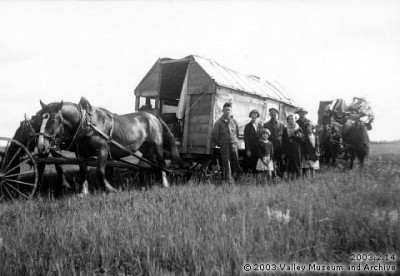
The Gordon Family travelled by covered wagon from Saskatchewan to Edmonton, averaging about 20 miles a day. There they loaded kids, wagons, and livestock onto the train which delivered them to McBride in 1938.
Along with the railway and sawmilling, farming was also established. Sawmills produced lumber for buildings, and poles and ties for the railway. Many railway workers took up land and stayed. The railway construction workers mostly came from Britain, central and eastern Canada, and Europe. Once the railway way was built, the railway company actively sought settlers for the community and the area.
In the early part of the twentieth century people arrived by train to enjoy the hiking, big game hunting and mountain climbing.
Photos courtesy of Valley Museum & Archives.
Settlers’ Effects has made available a large collection of Robson Valley historical photos on their website.
